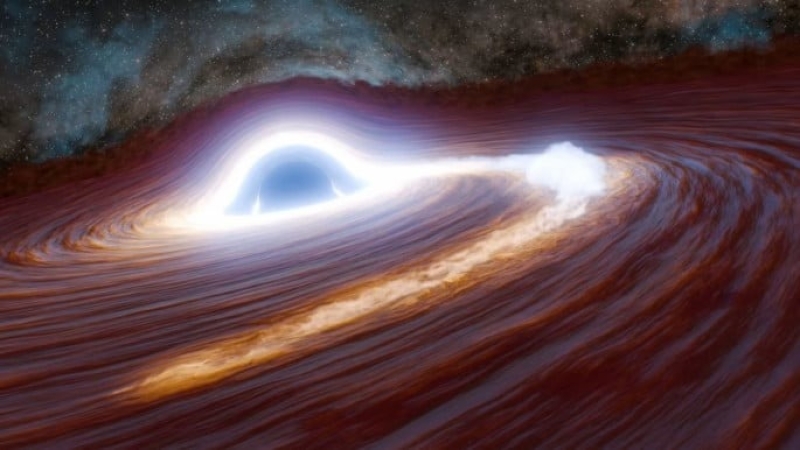News update
- World leaders meet in Brazil to tackle global warming |
- Brazil Launches Fund to Protect Forests and Fight Climate Change |
- UN Warns Conflicts Are Devastating Ecosystems Worldwide |
- Flood-hit Kurigram char residents see little hope in politics, elections |
- Air quality of Dhaka continues to be ‘unhealthy’ Friday morning |
Astronomers Spot Black Hole Flare Brighter Than 10 Trillion Suns
Greenwatch Desk
Space
2025-11-07, 10:41pm

Astronomers have observed the most powerful and distant flare ever recorded from a supermassive black hole — a cosmic explosion so intense it briefly outshone 10 trillion suns.
The flare, nicknamed ‘Superman’, erupted from an active galactic nucleus (AGN) located roughly 10 billion light-years from Earth, marking a significant milestone in the study of extreme astrophysical events.
The phenomenon occurred at the heart of a galaxy, where a supermassive black hole was actively consuming surrounding gas and dust. As the material spiraled inward, it heated to extreme temperatures, releasing a burst of energy visible across vast cosmic distances.
Researchers believe the flare resulted from a tidal disruption event, in which the black hole tore apart a massive star. Matthew Graham, a research professor at the California Institute of Technology and lead author of the study published in Nature Astronomy, described the event as potentially a “one-in-a-million” occurrence among active galaxies.
At its peak, ‘Superman’ was 30 times more luminous than any previously observed black hole flare. The black hole is estimated to be 500 million times the mass of the Sun, while the shredded star was at least 30 times the Sun’s mass — the largest star ever observed being consumed by a black hole.
The flare was initially detected in November 2018 by the Catalina Real-Time Transient Survey and the Zwicky Transient Facility at Palomar Observatory in California. At first, it was thought to be a blazar — a black hole emitting high-energy jets — but further analysis revealed its extraordinary brightness and energy. Follow-up observations, including from the WM Keck Observatory in Hawaii, confirmed its unprecedented nature.
Co-author KE Saavik Ford said the discovery offers vital insights into how massive stars form and survive in the extreme environments near galactic centres.
"This is likely the most massive star ever seen destroyed by a black hole," Ford said. "It shows that massive stars can exist in the gas disks surrounding these cosmic giants."

